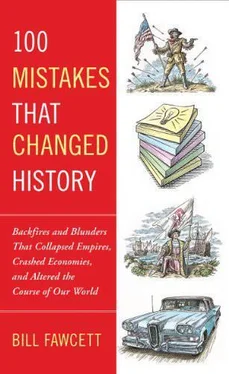One man in particular, Moses Austin, saw great potential to make money by applying for an empresario grant, which involved bringing in new settlers. He planned on charging each settler $0.125 per acre and using the profit to restore his family’s finances. He received permission from the Spanish government to settle 300 families in Texas. Unfortunately, Austin died before he could even get the ball rolling on the venture. So, his son, Stephen F. Austin, inherited the contract.
After going through a great deal of bureaucratic red tape, the younger Austin finally received the go-ahead to bring families across the border. He encountered problems shortly after the colony settled. Texas had a shift in government. The Mexicans won independence from Spain in 1821. The former Spanish territory became Mexican owned. The settlers had a whole new government to deal with. The new government did not carry forward every policy.
For example, the African slave trade had been banned in Mexican-held lands. This posed problems for the white settlers in Texas who were used to making their profits off the backs of the African slaves. The settlers found a loophole. They were allowed to bring their family slaves into Texas, where they bought and sold them. This practice continued for years until it was finally banned. When the settlers heard rumors that the slaves might be emancipated altogether, they took the precaution of having their illiterate slaves sign ninety-year indenture contracts. They need not have worried. In 1829, when President Vicente Ramón Guerrero finally emancipated the slaves, Austin spoke to his politically savvy Mexican friends and got a government exemption for his settlers.
Austin’s payback for his attitude toward the slaves came in the form of a financial letdown. It turned out that empresarios did not own the land within their land grants and therefore were not allowed to make a profit from the land. So, the plan of charging settlers $0.125 per acre was foiled. He did find another way to make money. The perk of being an empresario came with the bonus of 23,000 acres per each 100 families that settled. By 1834, near the end of the empresario era, Austin settled 966 families and received 197,000 acres in bonus land. Since the bonus land legally belonged to him, he could sell it to the highest bidder.
Austin was not the only empresario in Texas. Many others came but were not willing to follow the restrictions laid down by Mexican authorities. You know the saying “Give them an inch and they take a mile”? Well, the white settlers took more than a mile. They treated the Mexican inhabitants as foreigners in their own land. They used any excuse they could to incite the Mexican government and cause trouble. However, credit must be given where due. Austin did send a militia group to help the Mexicans put down one rebellious empresario.
The Mexicans grew more and more nervous about the growing number of settlers coming into Texas. So, in 1830, the Mexican government passed a law prohibiting any further Anglo immigration. They also taxed the settlers heavily. This was likely to encourage as many as possible to leave again. All over Texas, settlers protested. Although Austin had usually sided with Mexico during these hostilities, he was arrested outside Mexico City. He had been petitioning the newly appointed general, Antonio López de Santa Anna, to reopen the borders to immigrants and lower the taxes. Austin spent almost a year in a Mexican prison for trying to incite insurrection.
Santa Anna proved to be a vindictive despot who antagonized just about everyone in Texas, regardless of race. When he arrived back in Texas in 1835, Stephen Austin found the state in near rebellion. Even though he had occasionally sided with the Mexican authorities, spending a year in prison established his credentials. Leading landholders held a convention and appointed Austin as their leader. After many battles against their Mexican overlords, the Anglo settlers finally won their independence at the Battle of San Jacinto in 1836.
Mexico lost a lucrative province when it lost Texas. They lost it because the majority of its residents had no loyalty to that country. Even in protest to Santa Anna’s restrictions on their liberties and high taxes, without the American settlers there would have been little chance the province would have separated. Perhaps instead of paying Anglos to settle Texas, they should have offered better incentives to their own people. It was a mistake that cost Mexico the territory of Texas and turned the United States’ gaze on that nation’s other northern territories. The world would be very different if everywhere from Texas to California were still part of Mexico.
Executive Inaction Dooms the United States
1850
Almost all of the mistakes in this book are actions. They tell about someone doing something wrong or having an accident that changed history. Along with commission there is also omission. Not doing something can be just as great a mistake as doing something very wrong.
In the decade before the American Civil War, the United States endured three presidents in a row who were simply not up to the job. The question of slavery, which was wrapped in the problem of states’ rights and federal jurisdiction, was the major issue of the 1850s. Yet despite the obvious importance of the problem, amazingly little was done to address it. Slavery was just not a topic that could be ignored or about which any agreement could easily be found. The United States was just about the last place in the modern world where slavery was still legal. Britain, France, and most of Europe had banned it. A look at the record of the three presidents who served from 1850 until Lincoln was elected demonstrates what a mistake it can be when you do nothing.
Millard Fillmore took office because Zachary Taylor made some stupid choices. On the Fourth of July 1850, President Taylor spent hours in the hot sun at the dedication of the Washington Memorial. He then went back to the White House and helped himself to a lot of cold water, a large bowl of cherries, and finally some iced milk. The problem with this was that Washington, D.C., was in the midst of a particularly virulent cholera epidemic. Cholera is transmitted through tainted water. Everyone had been warned not to drink the water, eat fruit washed in the city’s water, or have anything containing ice made from the city’s water. Taylor did all three and was dead four days later. This made his vice president head of the nation in one of its most troubling times. Fillmore was not as strong a leader or as decisive as his predecessor. Where Taylor had stopped the Clay Compromise, Fillmore saw it as a needed solution. This admitted California as a free state and tightened the laws in the north regarding the return of fugitive slaves. Since the Fugitive Slave Act was unenforceable in the abolitionist north, the south felt betrayed. The Clay Compromise ended up doing more harm than good. That was it. Fillmore did nothing else and was dropped by his party in 1852. More than two years were lost through inaction.
Franklin Pierce was a last-minute candidate who first appeared on the thirty-fifth nomination vote at the Democratic Convention. That party was split between proslavery southern representatives and those who were just as vehemently abolitionists. Pierce was a doughface, a northerner who favored slavery. Pierce won the nomination and the presidency. But once in office, he proved totally ineffective in dealing with the slavery problem on any level.
Actually Pierce did more damage to what had been already worked out when he did try to act. When the issue of expansion of the United States into its western territories blew up over which would be free and which slave states, he helped Frederick Douglass destroy the Missouri Compromise. The citizens of Kansas and Nebraska were allowed to vote, slave or free. The resulting violence gave rise to the term “Bleeding Kansas,” and the split between north and south became greater. President Pierce was never again able to deal with the issue of slavery or much else. Mostly he went drinking and argued with his critics. By the end of his term, Pierce had proved himself abysmal at diplomacy and had a habit of substituting bluster for action. He alienated even his own party. In 1856 the motto of the Democratic Convention was “Anybody but Pierce.” When James Buchanan took office everyone forgot to get President Pierce to ride in the inaugural parade. He never did get to it. Because of Pierce, four more crucial years were lost, and the nation became more divided.
Читать дальше












